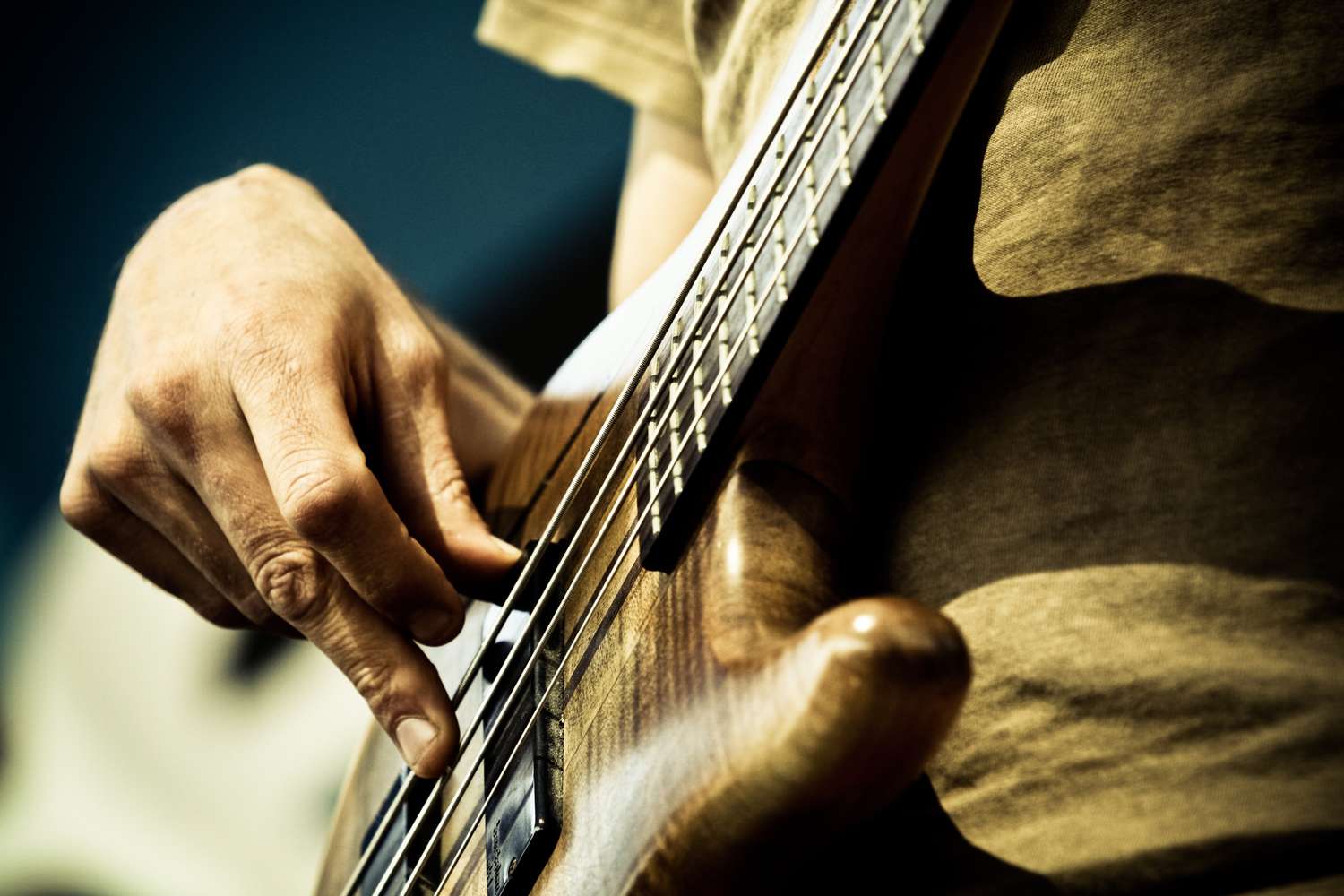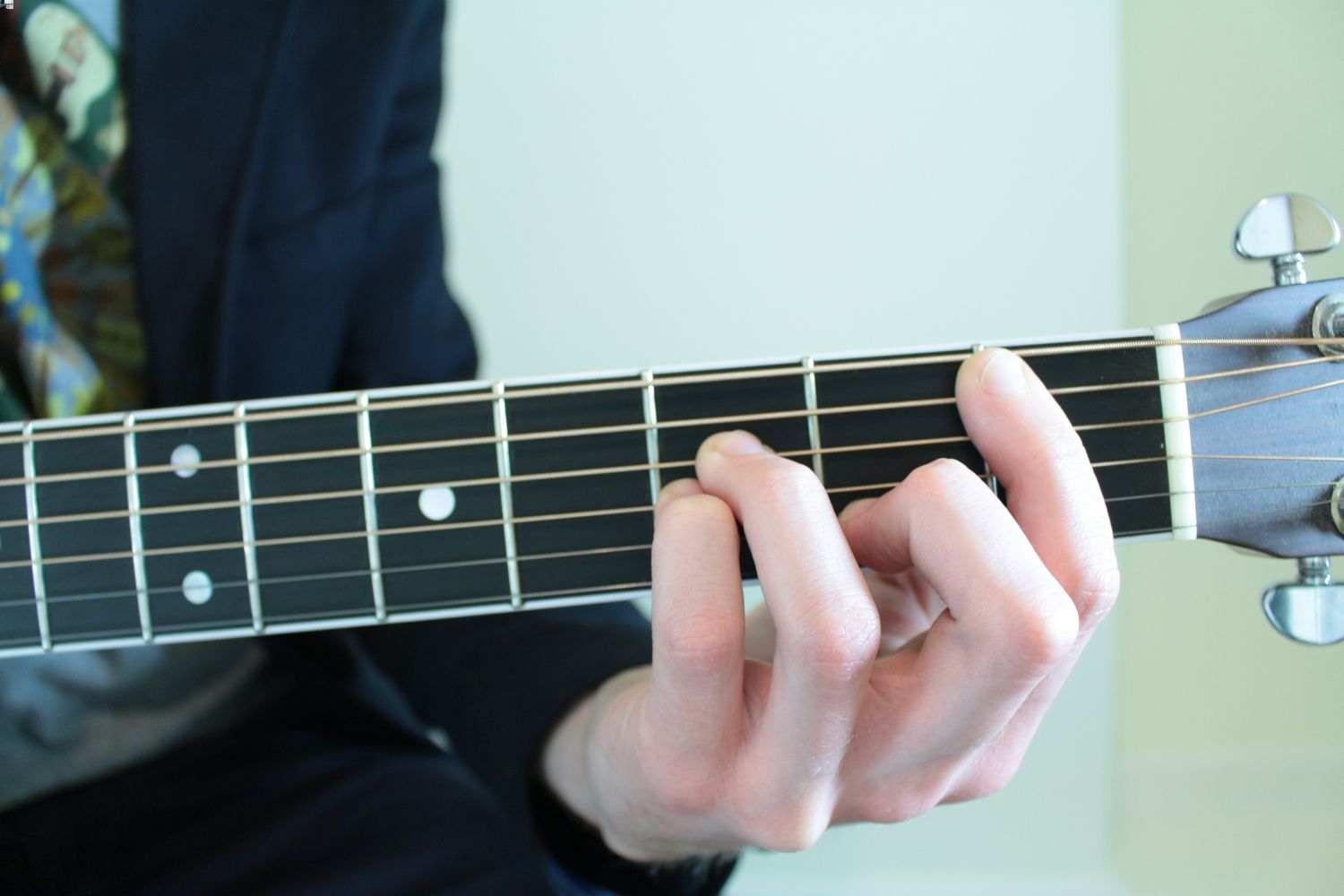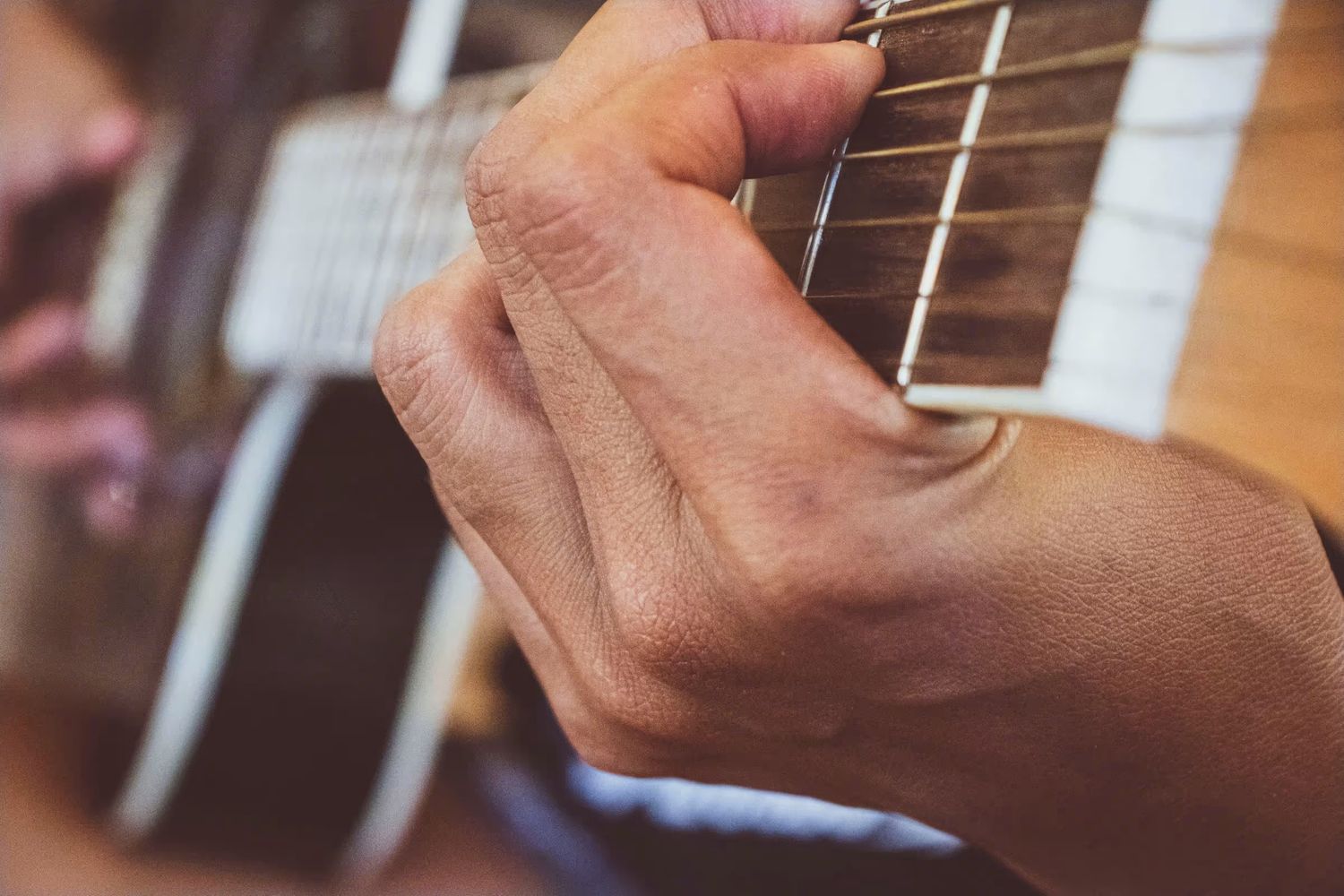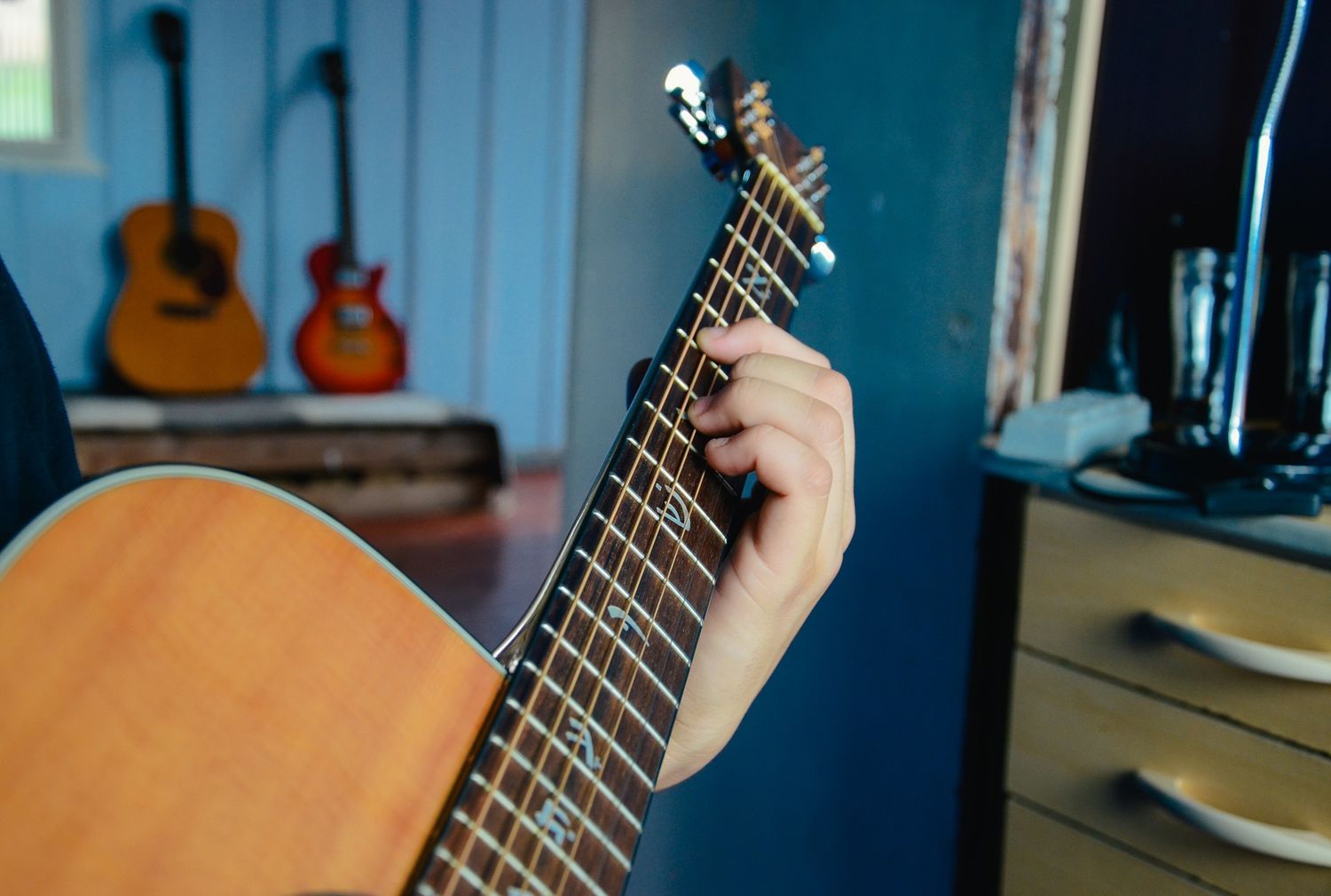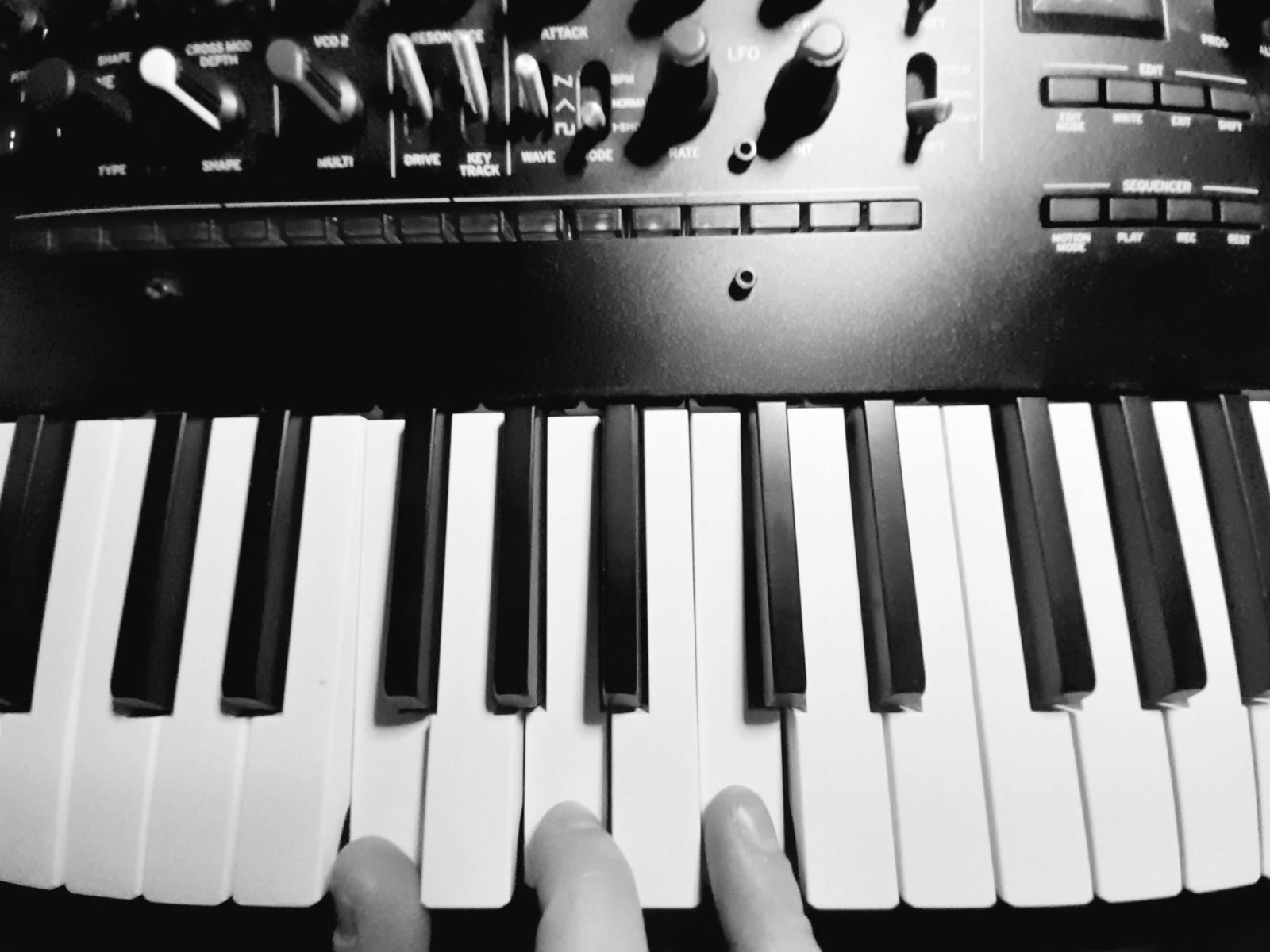Home>Instruments>Guitar>How To Play Bar Chords On A Guitar
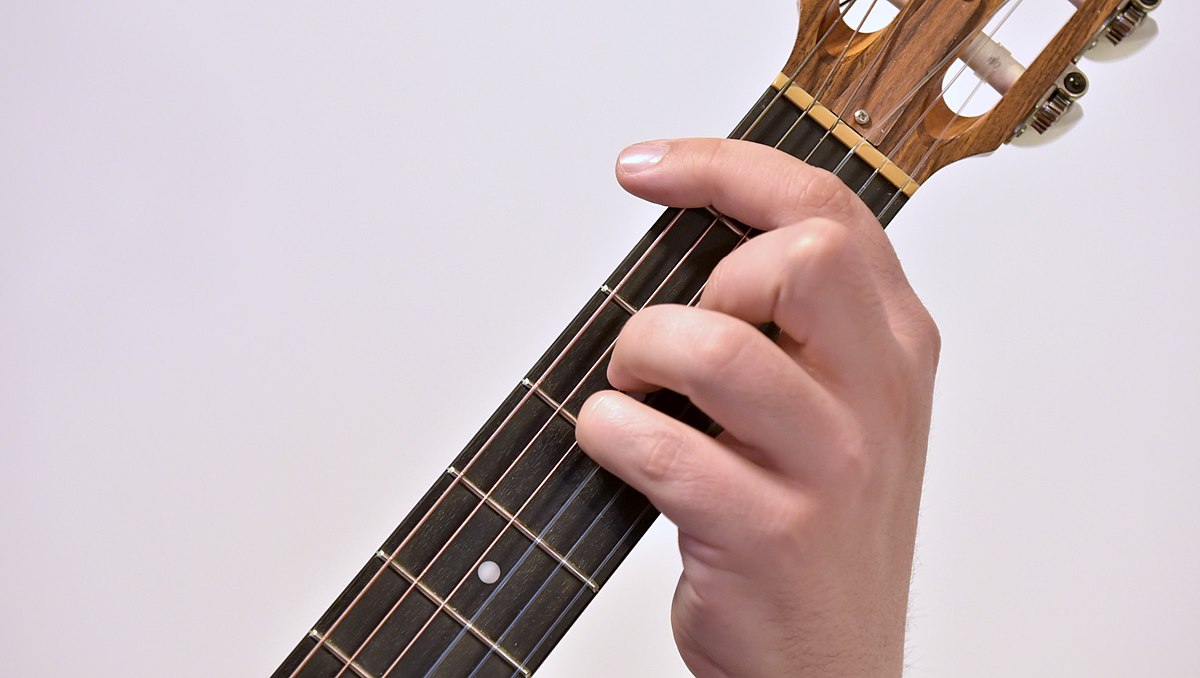

Guitar
How To Play Bar Chords On A Guitar
Published: February 13, 2024
Learn how to play bar chords on a guitar with our step-by-step guide. Master the technique and improve your guitar playing skills today!
(Many of the links in this article redirect to a specific reviewed product. Your purchase of these products through affiliate links helps to generate commission for AudioLover.com, at no extra cost. Learn more)
Table of Contents
Introduction
Playing the guitar is a fulfilling and enriching experience, and mastering bar chords opens up a world of musical possibilities. Whether you're a novice guitarist or have been strumming for years, understanding and effectively executing bar chords is a crucial skill. In this comprehensive guide, we'll delve into the intricacies of bar chords, explore their benefits, and provide valuable tips for mastering these versatile fretting techniques.
Bar chords, also known as barre chords, are fundamental to expanding your guitar repertoire. While they may seem daunting at first, with practice and dedication, you can seamlessly incorporate them into your playing style. This article aims to demystify the art of playing bar chords, equipping you with the knowledge and techniques needed to enhance your musical prowess.
As we embark on this enlightening journey, we'll unravel the essence of bar chords, delve into their myriad benefits, explore common chord shapes, and offer invaluable tips for overcoming common challenges. By the end of this guide, you'll be well-versed in the art of playing bar chords, poised to elevate your guitar playing to new heights. So, grab your guitar, tune your strings, and let's dive into the captivating realm of bar chords.
What Are Bar Chords?
Bar chords are versatile fretting techniques that enable guitarists to play a wide range of chords using the same hand shape. Unlike open chords, which utilize open strings, bar chords involve using one finger to press down multiple strings across the fretboard, effectively creating a "bar" that serves as the "nut" of the guitar. This technique allows for the transposition of chord shapes up and down the neck, resulting in a diverse array of chord voicings.
Bar chords are categorized into two primary types: E-shaped and A-shaped bar chords. E-shaped bar chords are based on the open E major chord shape, while A-shaped bar chords stem from the open A major chord shape. By mastering these two foundational bar chord shapes, guitarists can unlock the potential to play any major or minor chord across the fretboard, thereby expanding their musical repertoire.
Understanding the mechanics of bar chords is essential for navigating the guitar fretboard with ease. As you delve into the world of bar chords, you’ll discover the significance of finger placement, hand positioning, and the nuanced pressure required to produce clear and resonant sounds. While mastering bar chords may pose an initial challenge, the ability to seamlessly transition between chord shapes and keys is a valuable skill that distinguishes adept guitarists.
Bar chords offer a gateway to playing complex and rich-sounding chords that may be impractical or impossible to achieve using open chord shapes alone. This versatility empowers guitarists to explore various musical genres, experiment with chord progressions, and infuse their playing with depth and complexity. Whether you’re strumming along to a rock anthem, serenading with a soulful ballad, or jamming to a blues riff, bar chords are indispensable tools for expressing musical creativity and emotion.
Benefits of Bar Chords
Mastering bar chords offers a myriad of advantages that significantly enhance a guitarist’s playing ability and musical expression. These benefits extend beyond the technical aspects of fretting and encompass the broader realm of musical creativity and versatility.
1. Transpositional Flexibility: Bar chords empower guitarists to effortlessly transpose chord shapes across the fretboard, enabling them to play a wide range of chords in different keys. This flexibility is invaluable for adapting to various musical contexts and accommodating vocal ranges.
2. Enhanced Chord Voicings: Bar chords provide access to rich and resonant chord voicings that may be challenging to achieve with open chord shapes alone. The ability to produce full-sounding chords with added embellishments and variations elevates the overall musical texture and depth.
3. Musical Versatility: By incorporating bar chords into their repertoire, guitarists can explore diverse musical genres and styles, ranging from rock and blues to jazz and folk. This versatility expands the creative horizons, allowing for dynamic and expressive playing across different musical landscapes.
4. Smooth Chord Progressions: Bar chords facilitate seamless transitions between chords, enabling fluid and harmonious chord progressions. This fluidity is essential for creating compelling musical arrangements and maintaining a cohesive rhythm throughout a piece.
5. Fretboard Mastery: Mastering bar chords enhances a guitarist’s understanding of the fretboard, fostering a deeper connection with the instrument. This familiarity with various chord positions and inversions contributes to overall proficiency and confidence in navigating the guitar neck.
6. Expressive Playing: Bar chords open up avenues for expressive playing, allowing guitarists to infuse their music with emotion, dynamics, and nuanced tonal variations. The ability to convey a wide spectrum of moods and sentiments through chordal expression is a hallmark of adept musicianship.
Embracing the versatility and depth of bar chords empowers guitarists to expand their musical horizons, refine their playing technique, and embark on a journey of creative exploration. These benefits collectively contribute to a heightened level of musicality and proficiency, positioning bar chords as indispensable tools in a guitarist’s repertoire.
Common Bar Chord Shapes
Mastering common bar chord shapes is pivotal for expanding your guitar playing repertoire and unlocking a diverse range of chord voicings. These foundational shapes serve as the building blocks for navigating the fretboard with agility and precision, allowing you to seamlessly integrate bar chords into your musical endeavors. Here are some essential bar chord shapes that every guitarist should familiarize themselves with:
- E-shaped Major Bar Chord: This versatile shape is based on the open E major chord and can be moved up and down the neck to produce various major chords. By barring the entire fret with your index finger and forming the E major shape with your remaining fingers, you can create a rich and resonant major chord voicing.
- E-shaped Minor Bar Chord: Similar to the E-shaped major bar chord, this shape utilizes the E minor open chord formation and can be transposed to generate different minor chords. The melancholic and evocative quality of minor chords is readily accessible through this versatile bar chord shape.
- A-shaped Major Bar Chord: Rooted in the open A major chord, this bar chord shape allows for the seamless transition between major chords across the fretboard. By barring the desired fret and forming the A major shape, you can produce vibrant and full-sounding major chords with ease.
- A-shaped Minor Bar Chord: Embodying the emotive essence of minor chords, this shape draws from the open A minor chord and facilitates the effortless creation of minor chord variations. The haunting and introspective quality of minor chords is impeccably captured through this bar chord shape.
These fundamental bar chord shapes lay the groundwork for navigating the guitar fretboard with confidence and dexterity. By internalizing these shapes and their transpositional capabilities, you’ll gain a comprehensive understanding of how bar chords can enrich your musical expressions across various keys and musical contexts.
Additionally, exploring variations and embellishments within these bar chord shapes, such as sus chords, add9 chords, and extended voicings, further amplifies the melodic and harmonic possibilities at your disposal. Embrace these common bar chord shapes as the cornerstone of your guitar journey, and let their versatility and expressiveness elevate your playing to new heights.
Tips for Playing Bar Chords
Mastering bar chords requires patience, practice, and a keen understanding of proper technique. While initially challenging, integrating the following tips into your practice routine will enhance your proficiency and confidence in executing bar chords with precision and clarity:
- Optimize Finger Placement: Ensure that your barring finger is positioned just behind the fret wire to maximize fret clearance and minimize buzzing. Additionally, maintain a curved finger shape to exert even pressure across the fretboard.
- Apply Adequate Pressure: Press down firmly with your barring finger while maintaining a relaxed hand and wrist posture. Gradually build up the necessary finger strength through consistent practice to achieve clean and resonant chord tones.
- Utilize Proper Hand Positioning: Position your thumb at the back of the guitar neck to provide support and leverage for your barring finger. Avoid gripping the neck excessively, as this can impede finger mobility and chord clarity.
- Engage Core Muscles: Stabilize your fretting hand by engaging your core muscles, which contributes to overall dexterity and control. A strong and stable core provides a solid foundation for executing bar chords with precision.
- Practice Gradual Fretting: Start by practicing bar chords higher up the neck where fretting requires less force, gradually working your way down to lower frets as your finger strength and dexterity improve.
- Experiment with Finger Angle: Explore different angles and positions of your barring finger to find the optimal placement that minimizes string buzzing and maximizes chord clarity.
- Employ Individual Finger Pressure: While barring the necessary strings, focus on applying individual finger pressure with your remaining fingers to ensure clear and distinct string articulation.
- Utilize a Capo for Gradual Progression: Using a capo to raise the fret position can alleviate initial finger strain, allowing for gradual acclimatization to the pressure and technique required for bar chords.
Consistent and focused practice incorporating these tips will bolster your command over bar chords, enabling you to execute them fluently and expressively. Embrace the learning process, and with dedication, you’ll conquer the intricacies of bar chords, adding depth and richness to your guitar playing repertoire.
Troubleshooting Bar Chord Issues
Mastering bar chords is a journey rife with challenges, but understanding and addressing common issues can significantly expedite your progress. Here are some prevalent bar chord difficulties and effective troubleshooting strategies to overcome them:
- String Buzzing: String buzzing often occurs when insufficient pressure or improper finger placement is employed. To mitigate this issue, verify that your barring finger is positioned directly behind the fret wire and exerting ample pressure to cleanly fret all strings.
- Finger Fatigue: If you experience finger fatigue or discomfort while practicing bar chords, gradually build finger strength through targeted exercises and consistent practice. Over time, your fingers will acclimate to the required pressure and endurance.
- Muted or Faint Tones: Inconsistent finger pressure and improper finger positioning can result in muted or faint chord tones. Focus on maintaining uniform finger pressure across the fretboard and ensure that your fingers are not inadvertently muting adjacent strings.
- Hand Cramping: Hand cramping may arise from excessive tension or improper hand positioning. Relax your hand and wrist, and ensure that your thumb provides adequate support at the back of the neck without gripping excessively.
- Bar Finger Strain: If you encounter strain in your barring finger, take periodic breaks during practice sessions to prevent overexertion. Gradually increase practice duration as your finger strength and endurance improve.
- Unwanted String Resonance: Unwanted string resonance can result from inadequate muting of adjacent strings. Pay attention to the positioning of your non-barring fingers to prevent unintended string vibrations that compromise chord clarity.
- Intonation and Tuning: Ensure that your guitar is properly intonated and in tune, as inaccuracies in intonation and tuning can affect the clarity and resonance of bar chords.
Addressing these common bar chord issues through focused practice, mindful technique refinement, and gradual skill development will gradually diminish these obstacles. Embrace the learning process, remain patient, and persistently implement these troubleshooting strategies to conquer the challenges associated with mastering bar chords.
Conclusion
Congratulations on embarking on a transformative journey into the realm of bar chords. As you’ve discovered, mastering these versatile fretting techniques is a gateway to unlocking a world of musical possibilities and enhancing your guitar playing prowess. While the road to proficiency may present challenges, the rewards of integrating bar chords into your repertoire are immeasurable.
By delving into the essence of bar chords, exploring their transpositional flexibility, and internalizing common bar chord shapes, you’ve laid a solid foundation for elevating your musical expressions. The benefits of bar chords extend beyond technical proficiency, offering avenues for creative exploration, expressive playing, and versatile musical adaptability.
As you implement the tips for playing bar chords and navigate common troubleshooting issues, remember that patience, persistence, and focused practice are your allies in conquering the nuances of bar chord execution. Embrace the learning process, celebrate incremental progress, and remain steadfast in refining your technique.
Ultimately, the art of playing bar chords is a testament to your dedication, passion, and commitment to musical growth. Whether you’re strumming soulful ballads, rocking out to energetic anthems, or delving into intricate jazz progressions, the proficiency you gain in mastering bar chords will enrich your musical journey and resonate through your captivating performances.
So, pick up your guitar, immerse yourself in the melodic tapestry of bar chords, and let your musical aspirations flourish. With each resonant chord, each seamless transition, and each expressive rendition, you’ll embody the essence of bar chords and harness their transformative power to elevate your guitar playing to new heights.

